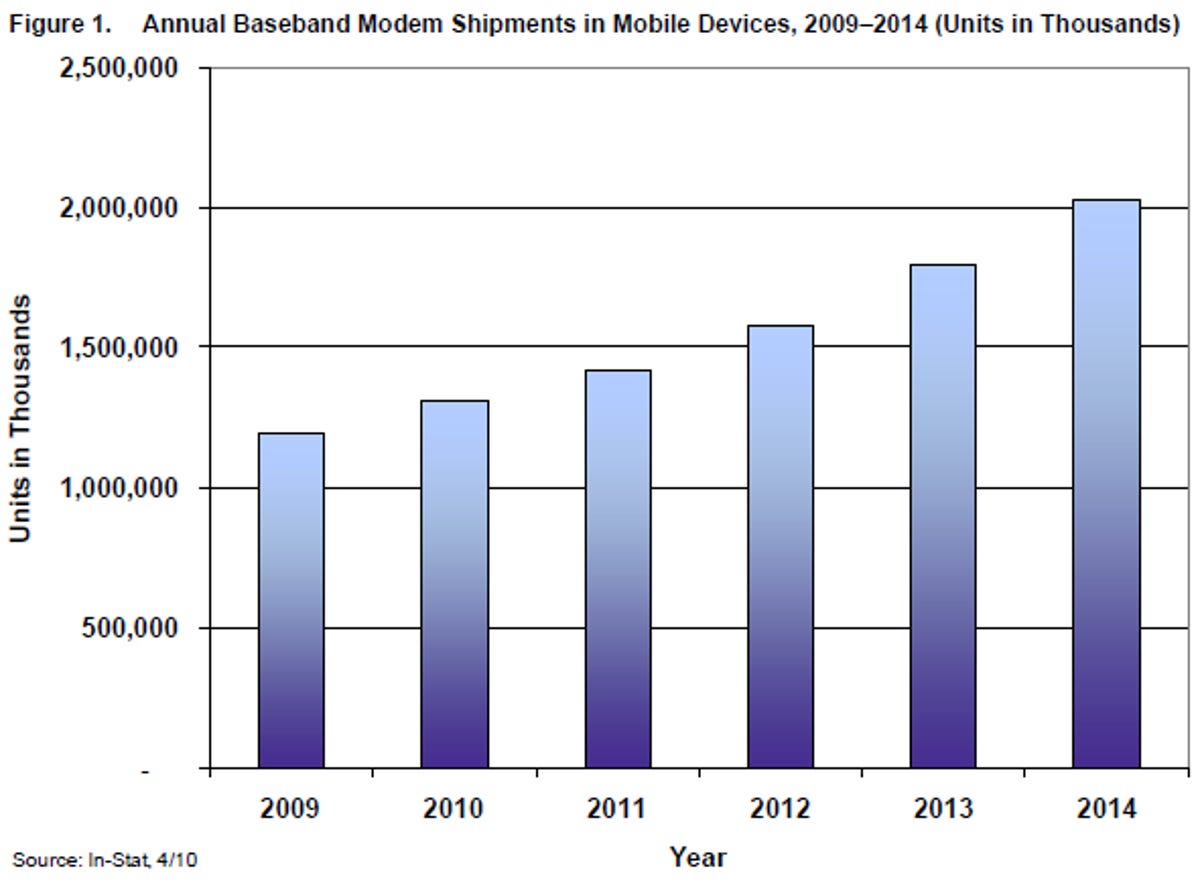The move to 4G and the longevity of 3G will kick off a rise in the number of devices shipped with baseband cellular modems to more than 2 billion annually in another four years, according to a report released Thursday by In-Stat.
Devices with baseband modems–wireless chipsets that enable the connection to cell towers–include traditional mobile phones, smartphones, Netbooks, notebooks, tablets, and e-readers. Though Wi-Fi will continue to be a practical technology for short-range connections, baseband devices will still offer greater coverage by tapping into cellular networks, according to In-Stat.

In-Stat
As the current onslaught of mobile devices taxes existing 3G networks, wireless providers are trying to ramp up their 4G deployments. But they face a variety of challenges, including different wireless standards and the limited availability of spectrum space, noted the report.
Because of those challenges, some trends are emerging.
Only around 3.6 percent of all mobile devices with baseband modems will be using 4G by 2014, so 2G/3G will continue to be the prevalent technology. Though WiMax got off to an early lead, LTE is likely to be the dominant wireless flavor in use by more than 60 percent of 4G-enabled devices in the next four years. Despite the popularity of smartphones, traditional handsets will still represent more than 90 percent of all devices with baseband modems in 2014.
Smartphones and computers will be the only consumer devices to make the leap to 4G in the next five years. Traditional handsets and other mobile electronic gadgets will probably stick with existing 2G/3G networks because of their lower cost, performance, and power requirements. Other consumer devices, such as digital cameras, camcorders, and handheld game consoles, will stay with Wi-Fi connectivity, In-Stat said.
Eyeing the longer-term picture, In-Stat believes the transition to 4G will be a slow one due to the expense of deploying and moving to an IP-based network. As a result, most carriers will continue to rely on their existing 2G/3G networks along with the new 4G networks at least through the end of the decade.



